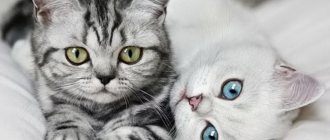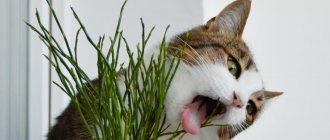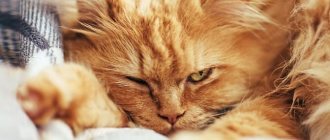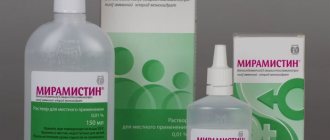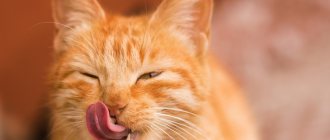PET/CT examination - what is it?
The deciphering of the abbreviation sounds like positron emission tomography - computed tomography. This diagnostic method combines the study of the structure and functional characteristics of tissues. The technology is especially widely used in oncology to identify and determine the degree of development of malignant tumors.
Why?
Today, up to 90% of PET/CT studies in the world are performed on people suffering from cancer. The study is important from a number of perspectives:
- The study is important from the point of view of determining the degree of development and spread of the tumor process, detection of metastases, both regional and distant.
- In medical practice, there are situations when doctors are unclear about the nature of the process occurring in a particular organ. The study allows you to differentiate the process, distinguish between benign and malignant.
- The study helps to understand whether the treatment is effective.
- The study can be used to diagnose relapse of the disease.
When it comes to diagnosis, many cancers have the ability to actively accumulate fluorodeoxyglucose. This substance is used during the study. However, some types of cancers have low metabolism.
These types include:
- Highly differentiated cancerous neoplasms of the thyroid gland; Benign tumors of any location;
- Some kidney tumors;
- Some bone tumors;
- Liver tumors;
- Prostate tumors;
- Some types of sarcomas, lymphomas.
Having a low metabolic rate, they are poorly visualized by PET/CT. This means that other diagnostic methods are required.
Description of research technology
The basis of the research technology is the study of tissue characteristics, structural and functional. Functional characteristics can be assessed through metabolism. Let's take the following example. We choose a substance that is necessary for all cells of the body. We mark it with a radioactive label, introduce it into the body and observe the places of its maximum accumulation.
Glucose is a universal substance in the human body. With the help of glucose, almost all tissues and cells are nourished. In malignant tumors, the greatest consumption occurs, since the growth and reproduction of tumor cells requires a lot of energy.
In a PET/CT scan, glucose is labeled with radioactive atoms with a short half-life. Once in the body, glucose actively accumulates in tissues with the most intense metabolism, i.e. in cancerous tumors.
The tag disintegrates, emitting energy in the form of gamma rays. A special device records this process. The data that the doctor receives creates a visual model showing the location of the tumor, its size and metastases.
Radioactive tracers accumulate only at the location of atypical cells; healthy tissues are not visualized.
When the doctor needs to examine both healthy and changed structures, CT comes to the rescue, allowing you to obtain a detailed picture with millimeter accuracy.
After data from both scanning systems is received, they are superimposed on each other, thereby achieving an image that gives a clear picture of the location of tumor foci.
Changes in eating after surgery
After the operation, the animal’s body is rebuilt and at first the kitten may even lose weight, but if it begins to gain weight rapidly, its diet needs to be reconsidered.
After the pet is brought home after castration, it does not need a diet. In a couple of days the pet will come to its senses. If the cat starts eating, then everything is fine. There is no need to specially force him; it is better to leave the food overnight, because cats are nocturnal animals and at this time of day their appetite is better.
After castration, a cat may not eat well due to a change in its taste preferences. What he liked before the operation no longer causes his appetite and vice versa. You need to watch your pet and pay attention to what he chooses from food.
If your kitten is experiencing mental discomfort, you can tempt him with foods he loves. This will serve as a way out of post-operative depression. You can give fried chicken after removing the skin . This dish has a strong aroma and is not heavy on the stomach.
The animal's appetite usually improves by the time mobility is restored, but if the cat does not want to eat after castration surgery for several days, this indicates the development of some complications.
Types of drugs used
The potential of a study depends on the arsenal of radiopharmaceuticals used in it. These drugs are labeled with unstable isotopes that make them radioactive.
Today, isotopes of such elements as:
- Nitrogen-13;
- Oxygen-15;
- Carbon-11;
- Fluorine-18.
In oncology, fluorine is most common, since it has the longest half-life and at the same time the lowest radiation energy.
These advantages of fluorine make it possible to obtain high-quality images with high spatial resolution. In addition, the relatively long half-life makes it possible to transport the drug from the site of production to the clinic.
The most common drug used is fluorodeoxyglucose. It is an analogue of glucose. Atypical cells absorb it faster, it actively accumulates, and this is ideal for scanning.
The downside of fluorodeoxyglucose is that it accumulates in brain tissue and nephrons, which in turn can cause these organs to glow, even when they are healthy.
This drawback stimulated the search for other, more advanced drugs, and now such drugs have been created.
An example of a modern drug is 18F-FET. It is intended for the brain and contains the amino acid tyrosine, labeled with the fluorine-18 isotope. Tyrosine has a very high selective accumulation in brain tissue, which is important for imaging neurotumors.
The drug is also used to diagnose oropharyngeal tumors, to detect metastases and to diagnose lesions of the cervical lymph nodes.
Postoperative care for a cat/cat, after sterilization, castration
When you take your cat to the clinic for sterilization, place a towel or rag on the bottom of the carrier; the warmer the better. After surgery, the animal's body temperature may drop slightly, so the cat will need to be wrapped in something warm.
1.Immediately after the operation, the cat must be put on a post-operative blanket, which will prevent the stitches from becoming infected and licking. The blanket is removed only while the seams are being processed, then put on again. The blanket must be worn, even if the cat does not show interest in the seams, and you do not see how she licks them. After the stitches are removed (usually 7-12 days after surgery), the blanket is worn for another 2-3 days. If you are given a cat that is still under anesthesia, you need to continuously monitor it until it begins to move independently and consciously.
2. Having brought the operated animal home, for the first 24 hours you will have to watch how it recovers from anesthesia. Lay something warm on the floor and place the cat on the bedding. Please note that there should be no drafts in the room. Do not place your pet on a surface (for example, on a chair or sofa): when coming out of anesthesia, the animal may suddenly jump up on its paws and run and will certainly fall to the floor from a height. During and after anesthesia, the animals' body temperature drops, so after anesthesia, the cat must be placed on the floor on a warm bedding (in no case on a sofa or other heights to avoid falling and injury), covered with something on top, and, if necessary, placed a heating pad under your back.
3. The movements of a cat recovering from anesthesia are not coordinated. She can get up, walk a few steps and fall again, she can bury herself in a corner and move her paws helplessly. The animal is not yet adequate. Just carefully pick it up and place it back on the mat. Remove hot and sharp objects from the floor; note that there should be no threads or wires on the floor in which the cat could become entangled. Remember: she is still practically asleep and completely helpless. It is advisable for the cat to lie on its right side after sterilization (in no case on the left, so that there is no additional stress on the heart after the operation). When waking up after anesthesia, cats usually alternate between states of deep sleep and increased motor activity; she may jump up and run or crawl until she hits some obstacle or falls on her side, she is disoriented, and may suddenly begin to meow loudly or try to roll over. This condition can persist after surgery from 2 to 8-12 hours. The cat may be lethargic and sleepy for up to 48 hours after surgery.
4. Cats do not close their eyes during anesthesia. Their eyes are open even during surgery. To avoid drying out the mucous membrane of the eyes, a special solution is instilled. But you will still have to close and open your cat's eyelids with your fingers every 20-30 minutes until she starts blinking on her own or until she closes her eyes. The cat's mouth will become dry, so it is advisable to moisten it with water or carefully feed the cat with a pipette, making sure that it swallows the liquid and does not choke. You need very little water, give it drop by drop. Turn it from side to side every hour or two. If the cat wants to go to the toilet, you need to help her by supporting her with a towel under her stomach for better stability and stimulation of defecation and urination.
5. After sterilization, a cat may frighten you with its behavior. Remember: if a cat is sleeping, and then suddenly wakes up and starts running, and then just as suddenly falls; if she tries to crawl somewhere or scratches her paws on the floor, if she meows or hisses and then falls silent; If you bump into corners and walls when walking, this is normal. The animal is disoriented, that's all. However, if you think that something is wrong with your pet’s recovery from anesthesia, call the veterinarian who performed the operation.
6. A cat may experience involuntary urination on the first day after surgery. Make sure your animal moves on surfaces that can be easily cleaned. In addition, a cat may vomit after anesthesia. Keep a bag or pot ready. Usually, before vomiting, the cat begins to lick itself involuntarily and without stopping. Pay attention to this.
7. It is recommended to feed the cat only 24 hours after sterilization (and operations in general), and to give it water after 3-4 hours. For another two or three days after anesthesia, the cat may have poor appetite. Typically, the cat can eat within a few hours after surgery. If food refusal occurs for more than a day, this is a reason to contact your doctor. If your cat ate dry food before the operation, then after recovery from anesthesia you can offer her a special canned postoperative food (from Royal Canin, Eukanuba, Hill's).
8. During anesthesia, intestinal motility slows down and, as a result, the movement of feces through the intestines. If the cat has no stool for more than 3-4 days after surgery, you can give the cat the laxative Forlax or Duphalac, after consulting with your doctor. 9. When treating sutures and antibiotic therapy, follow the recommendations of your doctor.
10. Caring for a neutered cat ends here. In about a day he will feel much better, and after 3-4 days he will calmly move around the apartment. He won't need any stitches.
Note: You should constantly monitor your temperature, whether the bandage is wet with blood, the color of your gums, and your regularity of urination.
11. Caring for a sterilized cat is much more difficult. The seams will need to be treated regularly (to do this, the blanket is removed from the hind legs and put back on after treatment). There is one danger associated with this blanket: after 5-6 days the cat may think that it is already healthy, and the tailed one will again begin to try to jump onto the bedside table, windowsill, sofa, etc. It is likely that the cat will not be able to jump. It happens that the blanket gets caught on something (for example, the handles on the door of a bedside table) and the cat hangs on it. Firstly, it will not be easy to remove the cat: it will meow loudly, squirm, hiss, bite and scratch. Secondly, if this happens when no one is home, the consequences can be dire. Before removing the stitches, limit the cat's movement in the house, try to protect it from the danger described above. Postoperative complications. 1. Post-anesthesia hypothermia. If after the operation the cat lies motionless for a long time, its paws and ears are cold, measure its temperature (with a thermometer in the anus), if the temperature is below 37 C and does not rise after covering the cat with warm heating pads, consult a doctor immediately!
2. Internal bleeding. You may suspect bleeding if your cat oozes blood from a skin suture, is lethargic for a long time, has a painful abdomen, and has pale, almost white, mucous membranes. If these signs occur, consult a doctor immediately!
3. Postoperative rise in temperature can normally last up to 3 days after surgery; if the temperature is above 39C for a longer period of time, consultation and examination by a doctor is necessary!
4. Postoperative swelling and redness around the suture can last up to 5 days after surgery, after which it slowly begins to subside and should not be there before the sutures are removed. Long-term consequences of sterilization (castration).
1. Obesity. After the cat recovers from surgery, it must be switched to a special ready-made low-calorie diet for neutered cats or to a strict diet, because... castrated animals are predisposed to obesity.
2. Syndrome of preserved ovarian tissue. With incomplete resection (removal) of ovarian tissue, behavioral manifestations of estrus (estrus) may be observed. These cats are evaluated using hormonal tests and vaginal cytology, and if the presence of ovarian tissue in the body is confirmed, then repeat surgery is recommended for these animals.
based on materials from the site https://kisorg.by/forum/topic_345
Indications for the study
- Search for the primary tumor site when metastases are detected;
- Determination of the stage of the oncological process;
- Differentiated diagnosis of relapse and post-treatment changes;
- Monitoring the course of the disease, detecting relapse;
- Planning of radiotherapy and surgical manipulation;
- Planning a biopsy and finding the most aggressive area of the tumor.
Radiofrequency ablation of liver metastases
Preparation
When preparing for the examination, you must adhere to a number of rules:
- The day before your scheduled procedure, follow a low-carbohydrate diet.
- Come to the examination on an empty stomach.
- On the eve of the study, avoid heavy physical activity.
- On the day of the procedure, drink plain water.
- Stop chewing gum.
- Come to the procedure in comfortable, comfortable and preferably warm clothing.
It is recommended to bring information about the disease, diagnoses, extracts from other hospitals, results of other studies, etc. to the research procedure.
Carrying out
The procedure itself takes about an hour, but it is necessary to keep in mind the preparation, preparation of the necessary papers and post-procedure rest.
The procedure is carried out in comfortable clothing; it is necessary to remove everything containing metal.
It is necessary to inform your doctor about the pain that may arise from prolonged immobility. Taking this into account, he will be able to select an individual procedure for the procedure.
After the injection, you must lie silent, motionless and relaxed. Immobility has a beneficial effect on the correct distribution of the administered drug. This is important for image quality.
The first stage of the examination is the administration of the drug. It lasts about an hour. The drug is administered intravenously. Sometimes the patient may feel fever, nothing more. The distribution of the drug among the cells lasts about an hour.
The second stage is scanning. Patient in a tomograph. CT is performed first, then PET. If required, an additional contrast agent is administered. The duration of this stage varies from twenty to forty minutes.
Upon completion, the CT and PET images are superimposed.
What after?
Afterwards, it is not recommended to be in crowded places for 24 hours, especially to have contact with pregnant women and children. In the family, it is necessary to maintain a social distance of 1 -1.5 from each other.
It is necessary to consume a lot of fluid, two and a half liters or more. This is necessary to remove contrast and radiopharmaceuticals faster and safer.
You can drink any decaffeinated drinks, not just water.
Castration procedure
Castration should be carried out on an empty stomach, due to the fact that general anesthesia is used. The pet is not fed 12 hours before surgery and is not given water for 6 hours. A kitten that is 7-10 months old is suitable for castration . If the cat is older than two years, additional examination is required before castration:
- blood tests;
- ECG;
- Ultrasound of the abdominal organs.
Two weeks before the operation, you need to get vaccinated and give the kitten an anthelmintic. After removal of the testicles, it is necessary to provide him with conditions for normal recovery.
Complications
Complications during the examination procedure are mainly associated with the administration of contrast.
It could be:
- Allergy caused by vein puncturing;
- Damage to blood vessels;
- The appearance of a hematoma;
- Neuritis
A very rare complication is renal dysfunction.
Oral administration of contrast may cause nausea, vomiting, and diarrhea.
After the procedure, dizziness and weakness may occur due to the fact that the stomach is empty.
The cat began to eat poorly: possible pathologies
Refusal to feed may be due to more unpleasant factors. These include:
- Severe blood loss. In fact, even with a loss of 15-20 ml, the cat will experience severe weakness. Accordingly, if the volume of leaked blood is greater, then the animal physically does not have the strength to eat.
- Intestinal atony. When the peristalsis of the digestive tract is greatly inhibited due to the action of certain drugs used to administer anesthesia. The problem is that in some animals, intestinal contractility is not restored on its own, which is why the pet does not have much of an appetite. In such cases, the cat eats little, but due to the fact that food masses “clog” the lumen of the intestines due to the inability of the latter to push semi-digested food further, severe intoxication develops. Usually the pet drinks greedily, but completely refuses to eat.
- Inflammation. "Classics of the genre". In most cases, it is a consequence of the “rash” actions of the cat herself, who constantly licks and scratches the suture line, introducing infection there. Sometimes inflammatory reactions are a consequence of gross violations of the basic rules of surgical asepsis and antisepsis. Peritonitis is especially dangerous (deadly). This is an inflammation of the peritoneum, often leading to death. The cat's overall body temperature rises sharply, she feels very unwell, and in the worst cases, the stitch begins to smell like pus. It is quite natural that a dying animal does not and cannot have any appetite.
- Sepsis (blood poisoning).
Radiation exposure to the patient during examination
The choice of radiation dose is influenced by the radiopharmaceutical used and the scope of the study. So scanning the head requires less radiation than scanning the whole body. Minimizing harm from using the method is achieved if the following requirements are followed:
- Use isotopes with a half-life of several minutes or hours;
- Calculate the dose individually for each patient, taking into account his age, height, weight;
- Use special filters on scanners, as well as programs that reduce radiation doses;
- Consume the required amount of fluid, this will allow you to quickly remove the radiopharmaceutical from the body
By contacting the Onco.Rehab integrative oncology clinic, you will find out where it is best to undergo the study that we told you about in this article.
Seam processing
Until the stitches have healed, the cat should be temporarily isolated from other animals and children, and, if possible, not allowed outside. In the first case, it will be possible to avoid damage to the seams from outdoor games, in the second - their contamination and, as a result, infection. It is also not recommended to wet the seams with water.
During the recovery period, your cat may require dressings. They can be carried out at home. Bandages must be sterile. Before applying the bandage, you need to treat the seam with an antiseptic, which will be prescribed to you by your veterinarian. Most often this is an aqueous solution of chlorhexidine. It is highly undesirable to use iodine and brilliant green for processing.




